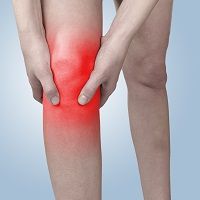Article
Day-to-Day Knee Pain in Osteoarthritis May Depend on Genetics
Author(s):
Exercise – it’s both the problem and solution for patients with osteoarthritis. Researchers from Pennsylvania State University found genetic biomarkers that could help predict day-to-day pain from physical activity in patients with knee osteoarthritis.

Exercise — it’s both the problem and solution for patients with osteoarthritis. Researchers from Pennsylvania State University found genetic biomarkers that could help predict day-to-day pain from physical activity in patients with knee osteoarthritis.
“The biggest problem in arthritis is that a person becomes physically inactive because they are in pain, but if they don’t move, then it makes them hurt more,” Lynn Martire, PhD, a professor of human development and family studies at Penn State, said in a news release.
The team focused on the two specific genes, catechol-O-methyltransferase (COMT) and mu-opioid receptor (OPRM1), detailed in the Scandinavian Journal of Pain. Previous research looked at these genes in terms of patient-to-patient pain differences. However, this new analysis examined how pain levels vary with these genes within one person. A total of 120 patients with knee osteoarthritis were enrolled in the study; they wore accelerometers and reported their pain three time a day for 22 days.
- The MD Magazine Osteoarthritis condition center
For the COMT rs4680 gene, those with the Val/Val genotype had the greatest day-to-day pain variability. These patients were also the ones who experienced the most pain following exercise. When it came to OPRM1 rs1799971, it turns out that the patients with two copies of the Asnâ´â° allele had the most day-to-day pain variation. However, as the previous studies showed, there was no significant person-to-person pain variation.
“Our results showed that the genotypes that had increased pain sensitivity were the opposite of what we predicted, but the context and the design of our experiment are different from previous work,” Martire continued.
The key takeaway here is that patients with these gene modifications could be more susceptible to variations in their day-to-day pain, as well as have more pain after physical activity than others.
What to Read Next >>> X-Rays May Not Pick Up on Hip Osteoarthritis




